Welcome to our comprehensive guide on shipping container home insulation! If you’re new to the concept, shipping container homes are innovative housing solutions created by refurbishing and repurposing old cargo containers.
Not only do these homes offer affordability, sustainability, and mobility, but they also provide a unique and modern living experience.
However, without proper insulation, these steel structures can become unbearably hot in the summer and uncomfortably cold in the winter. That’s why insulation plays a crucial role in enhancing the comfort, energy efficiency, and longevity of shipping container homes.
In this content, we’ll walk you through everything you need to know about insulating your shipping container home effectively.
From understanding the importance of insulation to the different insulation materials available, we’ve got you covered. Additionally, we’ll provide you with expert tips and guidelines to ensure you make the right choices for your insulation needs.
So let’s dive in and transform your shipping container home into a cozy, eco-friendly abode that you can enjoy all year round!
Table of Contents
Insulation Materials for Shipping Container Homes
A. Spray Foam Insulation
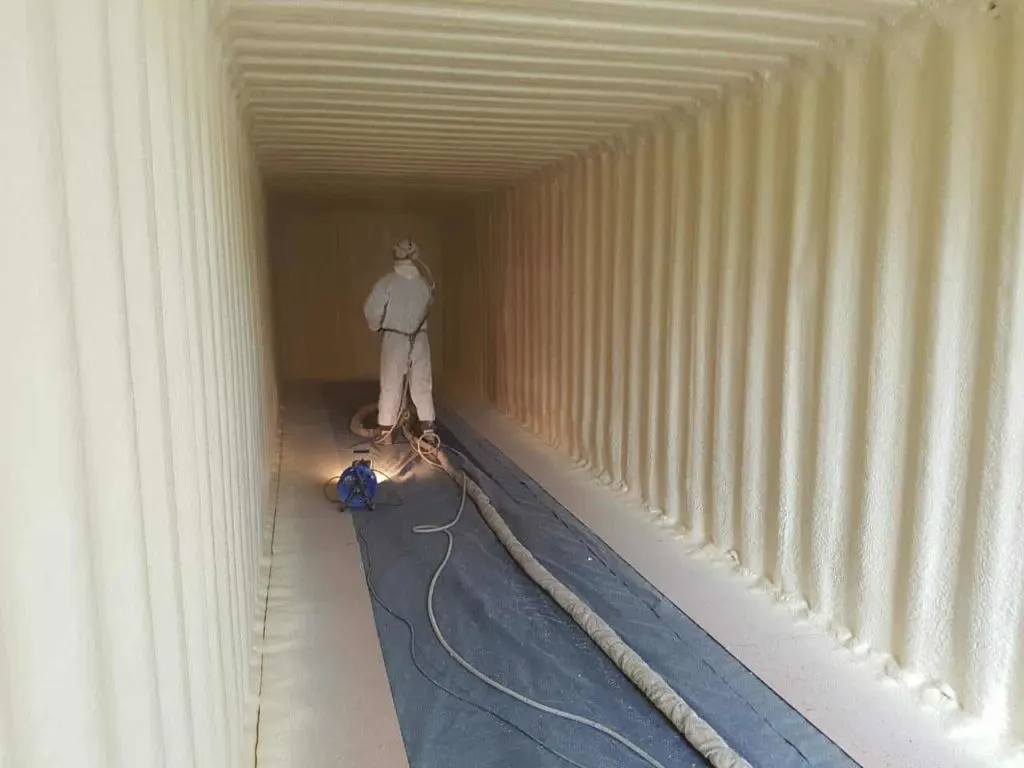
Without doubt, spray foam insulation is a popular choice for insulating shipping container homes due to its ability to create an airtight seal.
It is applied as a liquid and expands to fill every nook and cranny, providing excellent thermal insulation. Spray foam insulation also acts as a vapor barrier, preventing moisture from entering the home.
Read More on Why Container Shortage Compromise Global Logistics And Trade
B. Rigid Foam Insulation
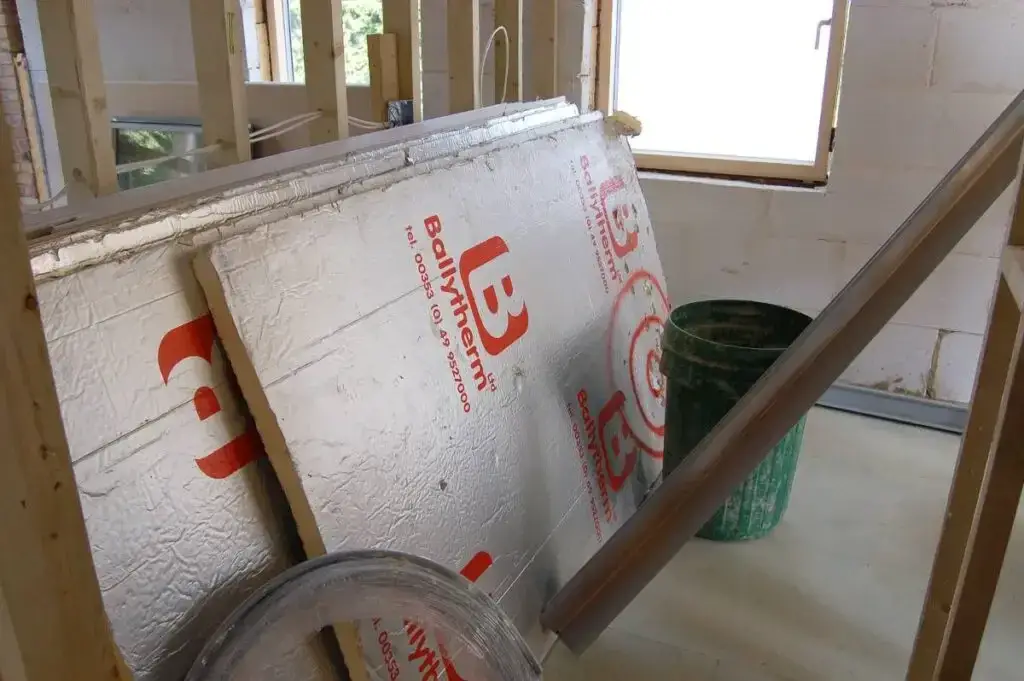
Rigid foam insulation, also known as foam board or foam panels, is another effective option for insulating shipping container homes.
It comes in various thicknesses and can be easily cut to fit the container’s walls. Rigid foam insulation provides good insulation value and helps to control moisture and condensation.
C. Cellulose Insulation
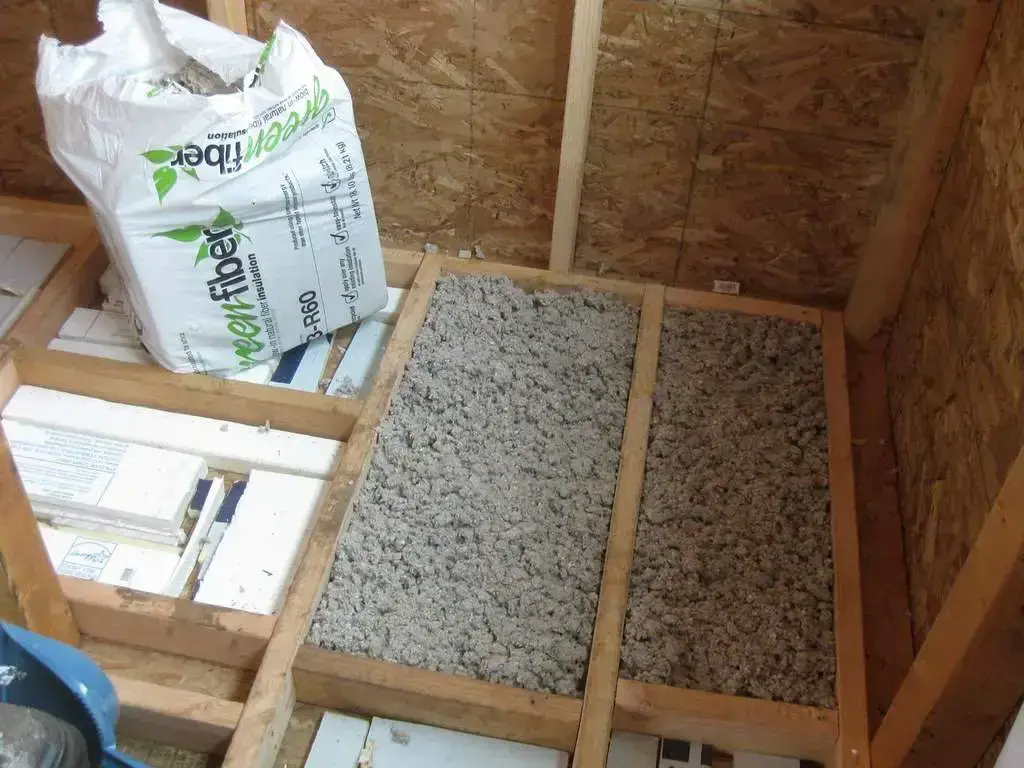
Cellulose insulation is a more eco-friendly choice for shipping container home insulation. It is made from recycled paper and treated with fire-retardant chemicals.
Cellulose insulation is blown or sprayed into the wall cavities, filling any gaps or voids. It offers good thermal and sound insulation properties.
Read More on Best Poolside Container Plants – Stunning Pool Area Choices
D. Fiberglass Insulation
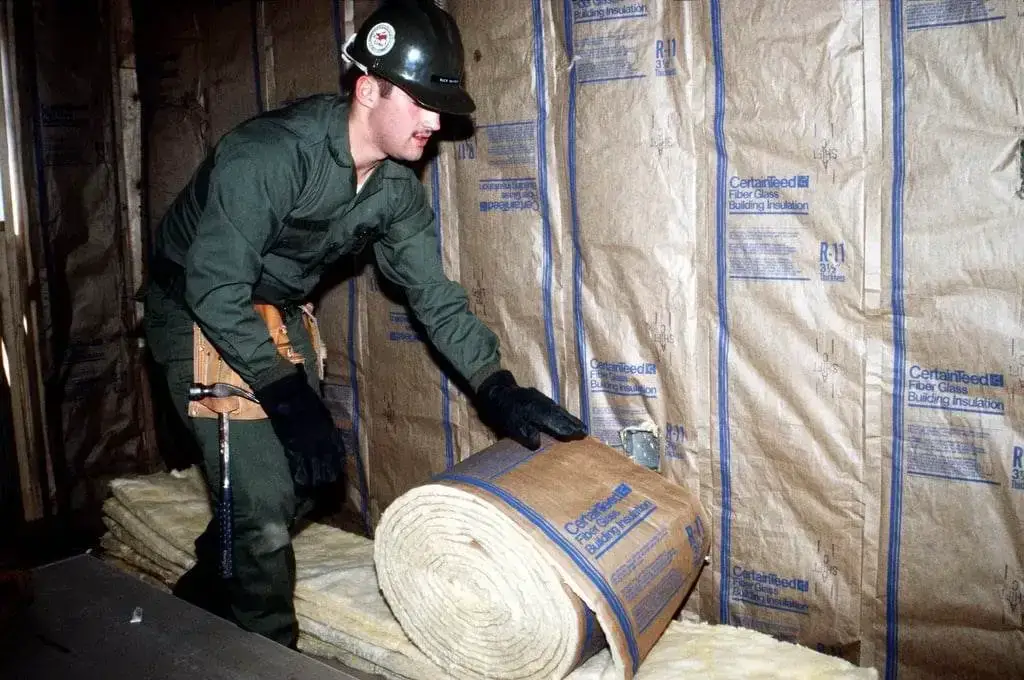
As you may already know, fiberglass insulation is a commonly used insulation material for various applications, including shipping container homes. It consists of fine strands of glass fibers and is available in batts or rolls.
Fiberglass insulation is affordable and easy to install. However, it may not be as effective at preventing air leakage as other insulation materials.
E. Comparison of Insulation Materials Based on Effectiveness and Suitability for Shipping Container Homes
- Spray foam insulation: Provides excellent air sealing and insulation, but it can be expensive.
- Rigid foam insulation: Offers good thermal insulation and moisture control.
- Cellulose insulation: Eco-friendly option with good thermal and sound insulation properties.
- Fiberglass insulation: Affordable and easy to install, but less effective at preventing air leakage.
Choosing the right insulation material for your shipping container home depends on factors such as budget, climate, and desired level of insulation.
| Image | Product Title | Features | Price |
|---|---|---|---|
 | Buy on Amazon | ||
 | Buy on Amazon | ||
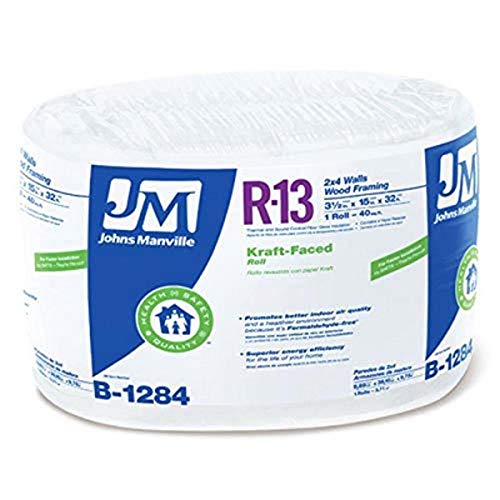 | Buy on Amazon |
Installation Techniques for Shipping Container Home Insulation
A. Wall Insulation Techniques
Insulating the walls of your shipping container home is crucial for maintaining a comfortable indoor temperature. One common technique is to use rigid foam insulation boards, which can be easily cut to size and attached to the interior walls with adhesive.
Another effective method is to install batt insulation between wooden or metal framing. This creates a thermal barrier and helps prevent heat transfer between the interior and exterior of the container.
Additionally, applying spray foam insulation directly onto the walls can provide excellent insulation and help seal any gaps or cracks.
Read More on Container Pools in NZ – Unparalleled Backyard Beauty
B. Roof Insulation Techniques
Properly insulating the roof of your shipping container home is essential for minimizing heat transfer and maintaining a comfortable living environment.
One popular technique is to use reflective insulation, such as radiant barrier sheathing, which reflects radiant heat away from the interior of the container.
Another effective method is to install rigid foam insulation boards on the ceiling of the container. These boards can be secured in place with adhesive or screws, providing a solid insulation layer.
C. Floor Insulation Techniques
Insulating the floor of your shipping container home is important to prevent heat loss and cold drafts from entering your living space.
A common technique is to lay rigid foam insulation boards directly on the container floor and secure them in place with adhesive or screws. This helps create a thermal break between the cold ground and the interior of the container.
Another method is to install subfloor insulation by placing batt insulation between the wooden or metal framing of the container floor. This provides an additional layer of insulation and helps maintain a comfortable temperature.
D. Insulating Container Doors and Windows
To ensure proper insulation and minimize air leakage, it’s crucial to insulate container doors and windows.
For doors, using a combination of weatherstripping and foam tape can help create a tight seal. Applying a layer of rigid foam insulation to the interior side of the door can further enhance insulation.
For windows, installing double-pane insulated windows is recommended. These windows have two layers of glass with an insulating layer in between, providing better thermal performance.
E. Materials for Exterior Insulation
The materials for exterior insulation can be stone, plaster, wood and so on. They can actually help provide a pretty impressive insulation and the quality you get is rather impressive. Yes, it does have its fair share of challenges, and in the end that’s the thing to pursue.
With that in mind, you can use cork for acoustic and thermal insulation. So there are certainly options, you just have to find the ideal ones that suit your needs and requirements. Then you will be more than OK.
Then there’s the mixed insulation. The idea here is to insulate the interior and exterior. You can apply interior insulation just for one part of the home. Then you insulate the entire exterior.
Granted, this is not exactly the recommended option, because there can be a thermal bridge instability. You can have massive temperature variations and that on its own might not end up being good. Still, some people applied it and it worked for them, so there’s that.
Read More: 5 DIY Spray Foam Insulation For The Best Results
F. Best Practices for Effective Insulation Installation
- Ensure all insulation materials are properly measured and cut to fit the designated areas.
- Use appropriate adhesive, screws, or fasteners to secure insulation in place.
- Seal any gaps, cracks, or joints with caulking or foam sealants to prevent air leakage.
- Consider applying a vapor barrier to control moisture and prevent condensation within the insulation.
- Regularly inspect and maintain the insulation to ensure its effectiveness over time.
Energy Efficiency and Shipping Container Home Insulation
A. Benefits of Proper Insulation in Reducing Energy Consumption
Proper insulation plays a crucial role in reducing energy consumption in shipping container homes. By effectively sealing the interior, insulation prevents heat or cold from escaping, thus minimizing the energy required to maintain a comfortable temperature. This results in lower energy bills and a more sustainable living environment.
B. Impact of Insulation on Maintaining a Comfortable Interior Temperature
Insulation serves as a barrier against external weather conditions, helping to regulate the interior temperature of a shipping container home.
In colder climates, insulation helps retain heat, while in hotter climates, it prevents heat from entering the living space. This ensures a comfortable and consistent temperature throughout the year, regardless of the external weather conditions.
C. Tips for Maximizing Energy Efficiency Through Insulation Choices
- Choose insulation materials with high R-values, which indicate better thermal resistance.
- Consider using eco-friendly and sustainable insulation materials, such as recycled denim or cellulose insulation.
- Properly seal all gaps and cracks to eliminate air leakage, enhancing the effectiveness of the insulation.
- Install insulation in all areas, including walls, floors, and ceilings, to create a thermal envelope within the shipping container home.
- Consider adding reflective insulation, such as radiant barriers, to further improve energy efficiency by reflecting heat away from the living space.
Read More on Luxury Container Hotels – Offering Unique Experiences
Moisture Control Strategies for Shipping Container Home Insulation
A. Importance of Moisture Control in Shipping Container Homes
Moisture control is crucial when insulating shipping container homes. Without proper measures, moisture can seep into the interior, leading to mold growth, structural damage, and compromised air quality. It is essential to implement effective strategies to prevent moisture-related issues.
B. Vapor Barriers and Their Role in Controlling Moisture
Vapor barriers play a vital role in controlling moisture in shipping container homes. These barriers prevent moisture from infiltrating the insulation material and entering the living space.
By installing a vapor barrier between the interior surface and the insulation, you can significantly reduce the risk of condensation and moisture-related problems.
C. Ventilation Techniques to Prevent Moisture-related Issues
Implementing proper ventilation techniques is another effective way to control moisture in shipping container homes.
By ensuring adequate airflow, you can reduce the likelihood of moisture buildup and promote the evaporation of any trapped moisture.
This can be achieved through the use of vents, fans, and air exchange systems strategically placed throughout the container home.
D. Proper Insulation Placement to Avoid Condensation Problems
Proper insulation placement is crucial to avoid condensation problems in shipping container homes. Insulation should be installed in a way that minimizes the potential for cold surfaces to come into contact with warm air, causing condensation.
By providing an insulating layer between the container walls and the interior space, you can prevent condensation and subsequent moisture issues.
Cost-Effective Insulation Solutions for Shipping Container Homes
A. Discussion of Budget-friendly Insulation Options
Insulating your shipping container home doesn’t have to break the bank. There are several budget-friendly insulation options available that can provide efficient thermal insulation at a lower cost.
B. Comparing Insulation Costs and Their Effectiveness
When considering insulation for your shipping container home, it is essential to evaluate both the cost and effectiveness of different insulation materials.
By comparing insulation costs and their effectiveness, you can choose the best option that fits your budget and provides optimal insulation.
C. Highlighting Cost-saving Measures While Achieving Effective Insulation
Effective insulation doesn’t necessarily mean expensive insulation. There are cost-saving measures you can undertake while achieving efficient insulation in your shipping container home.
By implementing strategies such as proper air sealing, utilizing recycled insulation materials, or opting for DIY installation, you can save costs without compromising on insulation quality.
Read More on Experience Luxury Living In Tasmania With Stunning Container Homes
Building Codes and Regulations for Shipping Container Home Insulation
When planning to insulate your shipping container home, it is crucial to understand and comply with local building codes and regulations. These codes ensure the safety and structural integrity of your home.
A. Understanding Local Building Codes and Regulations
Each locality has its own set of building codes and regulations that dictate the standards for construction and insulation. It is essential to familiarize yourself with these requirements before starting your insulation project.
Consulting with local building authorities or hiring a professional who is knowledgeable about these codes will ensure that your shipping container home meets all the necessary guidelines.
B. Insulation Requirements for Compliance with Building Standards
Building codes often include specific insulation requirements to guarantee energy efficiency and proper thermal performance. These requirements might factor in the climate and environmental conditions of your area.
It is important to understand the insulation requirements for your shipping container home to ensure compliance with the building standards. Proper insulation can help you avoid penalties and ensure a comfortable living environment.
C. Specific Considerations for Insulating Shipping Container Homes
Insulating shipping container homes pose unique challenges due to the unconventional nature of their construction.
While some building codes might apply to traditional homes, additional considerations are required for shipping container homes.
- The strength and durability of the insulation materials used
- The prevention of condensation and moisture buildup
- The installation techniques to address thermal bridging
- Proper ventilation and air circulation
For a successful insulation project, it is essential to consider these specific aspects and ensure compliance with the building codes and regulations applicable to shipping container homes.
Read More on Luxury Container Homes In South Africa: Incredible Concepts
Insulation Versus Thermal Bridging in Shipping Container Homes

A. Definition and Explanation of Thermal Bridging
Thermal bridging refers to the process where a conductive material creates a pathway for heat to flow through a building envelope.
In the case of shipping container homes, thermal bridging occurs when the metal walls and roof of the container allow heat to transfer from the exterior to the interior, or vice versa.
B. How Insulation Can Minimize Thermal Bridging Issues in Shipping Container Homes
Insulation plays a crucial role in minimizing thermal bridging issues in shipping container homes. By creating an insulating layer between the container’s metal surface and the interior living space, insulation helps to reduce heat transfer and improve the overall thermal performance of the home.
C. Common Thermal Bridging Issues in Shipping Container Homes and Their Solutions
1. Wall Framing: The metal studs used for wall framing can act as thermal bridges, allowing heat to bypass the insulation.
To address this issue, it is recommended to use continuous insulation on the exterior or interior side of the studs, ensuring there are no gaps or breaks in the insulation layer.
2. Roof Connections: The connection points where the roof meets the container walls can also create thermal bridging. Applying insulation and sealants at these junctions can help mitigate heat transfer and improve the overall insulation performance of the roof.
3. Foundation and Flooring: The lack of insulation in the container’s flooring and foundation can lead to significant thermal bridging. Installing insulation below the flooring or using insulated flooring materials can help minimize heat loss through the foundation.
- Using insulation materials with low thermal conductivity, such as spray foam or rigid foam, can enhance the effectiveness of insulation and reduce thermal bridging.
- Proper installation techniques, such as sealing air gaps and ensuring continuous insulation, are essential to avoid thermal bridging.
- Regular inspections and maintenance can help identify and address any potential thermal bridging issues in shipping container homes.
R-Values and Insulation Efficiency in Shipping Container Homes
When it comes to insulating your shipping container home, understanding R-values and insulation efficiency is crucial. These factors determine how well your insulation materials can resist heat flow and keep your home comfortable.
A. Understanding R-values and Their Significance in Insulation
The R-value is a measure of thermal resistance provided by insulation materials. It indicates how effective a material is at preventing heat transfer.
The higher the R-value, the better the insulation’s ability to resist heat flow. In simple terms, a higher R-value means better insulation and greater energy efficiency.
For shipping container homes, which can be prone to extreme temperature fluctuations, insulation with higher R-values is essential. It helps maintain a comfortable indoor temperature and reduces the load on your heating and cooling systems.
B. How Insulation Materials are Rated for Their Thermal Resistance Efficiency
Insulation materials are tested and assigned R-values by certified laboratories. These tests measure the resistance of materials to heat flow under controlled conditions. The results determine the R-value of each material.
Common insulation materials used in shipping container homes, such as fiberglass, mineral wool, and spray foam, are rated based on their thermal resistance efficiency. The higher the R-value of a material, the better it performs in insulating your home.
Read More on An Excellent Guide for Shipping Container Home Foundation
C. Choosing Insulation Materials Based on Desired R-values
When selecting insulation materials for your shipping container home, it’s vital to consider the desired R-values for different areas of your home. The R-value requirement may vary depending on the climate and the specific location within your home.
For example, areas that experience more extreme temperatures, such as roofs and walls facing direct sunlight, may require insulation materials with higher R-values. Similarly, regions with colder climates may need insulation with higher R-values to ensure effective thermal resistance.
Consulting with insulation professionals or following local building codes and regulations can help you determine the appropriate R-values for your shipping container home.
Soundproofing Solutions for Shipping Container Homes
A. Importance of Soundproofing in Shipping Container Homes
When designing and building a shipping container home, one often overlooked factor is soundproofing. However, considering the potential noise issues that can arise in these unconventional dwellings, it is crucial to prioritize soundproofing during the construction process.
Noise can originate from various sources, such as external factors like traffic, neighbors, or even nearby industrial areas.
Additionally, internal noises created by appliances, HVAC systems, or simply the activities of daily living can also impact the comfort and tranquility of your shipping container home.
- External noise sources
- Internal noise sources
Read More on What Are The Different Types Of Solar Energy?
B. Insulation Solutions for Sound Reduction and Acoustic Control
To effectively reduce noise transmission, insulation materials with soundproofing properties should be incorporated into the construction of your shipping container home. Here are some commonly used solutions:
- Fiberglass insulation: Fiberglass insulation, when properly installed, can significantly reduce airborne noise by absorbing sound waves and preventing them from traveling through the walls and ceilings of your container home.
- Mineral wool insulation: Similar to fiberglass, mineral wool insulation is also effective in reducing sound transmission. Its dense composition acts as a barrier to airborne noise, making it an ideal choice for soundproofing.
- Acoustic foam panels: Acoustic foam panels are designed specifically for sound absorption and control. They can be installed on the walls and ceilings to prevent sound from bouncing and echoing within the container home.
C. Enhancing Comfort and Privacy Through Soundproofing Techniques
Aside from reducing noise, soundproofing techniques can also enhance the overall comfort and privacy within your shipping container home. Here are some additional methods to consider:
- Seal gaps and cracks: Ensuring a tight seal around doors, windows, and any other openings is crucial for preventing sound leaks. Use weatherstripping and caulk to seal any gaps or cracks that may contribute to noise transmission.
- Double-glazed windows: Installing double-glazed or laminated windows can provide an extra layer of sound insulation, effectively reducing external noise penetration.
- Using soundproof curtains or blinds: Adding soundproof curtains or blinds to your windows can further minimize noise intrusion, offering both acoustic control and privacy.
Read More on Solar Energy: Their Different Types And How They Perform
Retrofitting Insulation Into Pre-Built Shipping Containers
When it comes to shipping container homes, insulation plays a crucial role in providing comfort and energy efficiency.
While it’s ideal to incorporate insulation during the initial construction phase, there are instances where pre-built shipping containers need insulation upgrades.
Retrofitting insulation into existing shipping containers can be challenging but with the right strategies, it can greatly improve the livability and energy efficiency of these unique homes.
A. Challenges and Considerations for Retrofitting Insulation
Retrofitting insulation into pre-built shipping containers poses certain challenges that need to be carefully navigated. Due to the limited space and restricted access, it may be more difficult to install insulation compared to traditional home structures.
One major consideration is the potential impact on the interior space. Insulation materials take up valuable square footage, which can reduce the already limited living area. It’s crucial to choose insulation types and techniques that provide optimal thermal performance without sacrificing too much interior space.
B. Strategies for Retrofitting Insulation Into Existing Shipping Containers
Despite the challenges, several strategies can be employed to successfully retrofit insulation into pre-built shipping containers.
One approach is to use spray foam insulation, which can be applied directly to the container walls and roof. It not only fills gaps and seals off air leaks but also provides excellent thermal insulation.
Another option is to install rigid foam insulation boards on the interior walls of the container. These boards can be cut to size and attached using adhesive or mechanical fasteners. They offer good thermal resistance and can help overcome the space constraints of retrofitting insulation.
C. Improving Energy Efficiency and Livability Through Retrofitting Insulation
By retrofitting insulation into pre-built shipping containers, homeowners can significantly improve energy efficiency and livability.
Proper insulation minimizes heat transfer, reducing the need for heating and cooling systems. This not only lowers energy bills but also enhances comfort inside the container home.
In addition, insulation helps control condensation and moisture buildup, preventing potential issues such as mold growth and structural damage. By addressing these moisture concerns, homeowners can enjoy a healthier indoor environment.
Other Types of Insulation That Can Be Used in an Intermodal Container Home
1. Cork-based Insulation
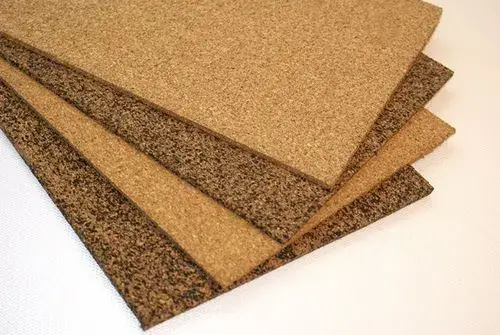
A lot of people try to go the natural route when they want to insulate a shipping container. The truth is that cork is one of those natural materials to offer you a pretty good insulation without dealing with chemicals.
Most people try to stay away from chemicals as much as possible these days anyway. So it makes sense to have things like cork being provided, and that’s certainly a thing to take into consideration.
Cork is biodegradable and renewable, so it’s actually one of the better materials out there when it comes to insulation. Another thing to note is that you don’t have to cut down trees to harvest cork. Instead you get the bark from trees every 9 years.
This is why cork is a good option. Because it’s a renewable resource and it does convey a tremendous experience and solution. It’s totally something to keep in mind, and you will appreciate the value and benefits that you expect. Which is exactly something to pursue and focus on all the time.
Read More: 11 Mistakes to Avoid While Building a Container Home
Is Cork Insulation Carbon Negative?
That being said, this harvesting process is making cork carbon negative. Then there’s also the fact that cork offers great acoustic properties. Which means you don’t have to worry about sound transmission as much.
It’s totally something you want to consider. And in the end you will be more than happy with the process and experience. That’s why cork can be a good idea for shipping container home insulation.
Read More: Amazing Cost To Build A Shipping Container Home
2. Using Wool for Shipping Container Home Insulation
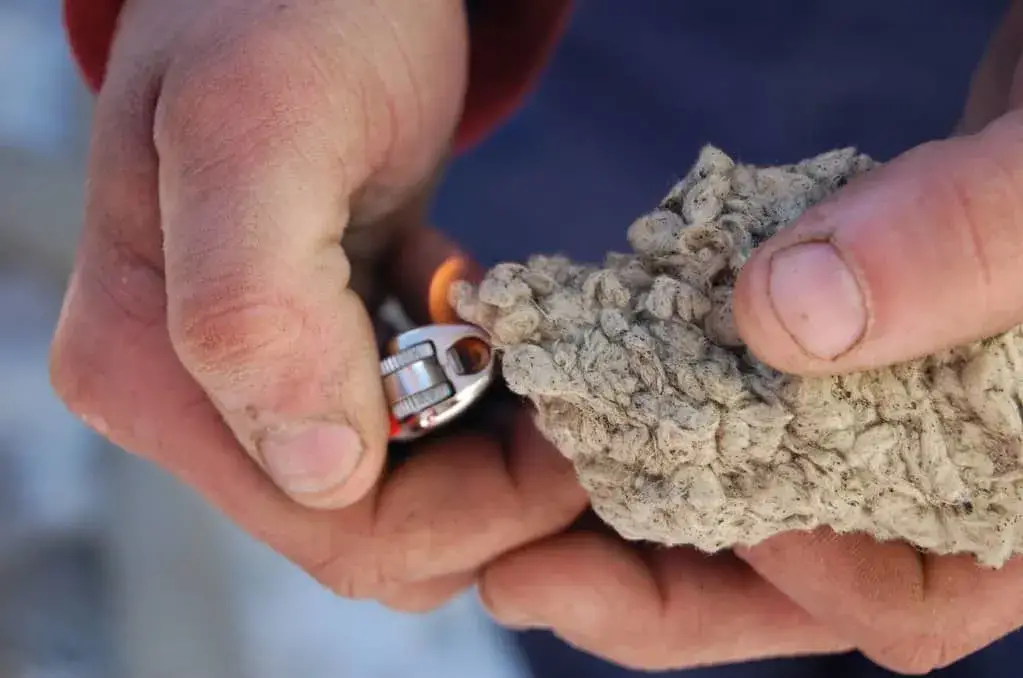
Another material that you could possibly use for insulation is wool. Yes, wool is also renewable and it can help you insulate your shipping container home without that much of a hassle.
A lot of people might end up dismissing this because they think it’s not working the way they want. But the truth is that wool is actually very reliable, efficient, and it can be the answer to the how to insulate a shipping container home question.
Wool has a very high performance and it’s environmentally friendly too. It has an R value of 3.5 per inch. To put that into context, it has a similar insulation value to denim, fiberglass, and many others.
Read More: Here Are The Best 15 Energy-Efficient Homes and Costs
Fire Resistance of Wool Insulation for Your Container Home
Another thing to keep in mind is the fact that the lanolin you find in a sheep’s wool is actually a natural flame retardant. You don’t need to add any chemical solutions and in doing that, you will be quite impressed with the value and quality.
The fact that there’s great thermal performance and you also don’t have to spend a ton of money is amazing in its own right. Which is why we recommend using this particular approach when it comes to insulation.
Obviously there are other options, but overall you are getting a pretty good value for money and the quality is definitely there.
When you’re insulating a shipping container home, you always want to find the right option that suits your requirements and your budget. And yes, this might very well be the one you want.
Read More: Seven Helpful Ideas for Designing A Container Home Bedroom
3. Cotton Insulation
When we think about materials for shipping container home insulation, cotton is actually a very good one. It’s an ethical solution and one that truly gets to make a difference.
The best part is that a lot of companies are offering a cotton-based insulation solution. And you will find that it’s actually delivering a similar performance to wool and fiberglass.
So, why not use cotton to begin with? In many cases, you will find it to be less expensive when compared to other options anyway, so that’s totally a thing that makes a huge difference.
You don’t have to treat cotton with any chemicals, whereas other compounds might need treatments, which is a problem. With that being said, you need a vapor barrier if you want cotton insulation.
Read More: Arizona Solar Panels – All About and Complete Expert Scrutiny
Disadvantages of Using Cotton to Insulate Your Shipping Container Home
When cotton is wet, it becomes very dense. Upon that happening, you will end up with cotton losing some of its properties.
The challenge here is that it takes a while for it to dry out and thus regain some of those great properties. But if you get past that, it’s actually going to be more than ok.
So, is cotton a good idea for insulating a shipping container home? It depends on where you live and if there’s plenty of wetness there. Thankfully, for the most part shipping container homes will be ok with cotton insulation.
But if the humidity levels are high, then you may want to find other options. Still, it’s one of the best materials out there and certainly something to think about in a situation like this.
Read More: What’s the Best Spray Paint for a Shipping Container Home?
4. Strawbale or Hempcrete to Insulate a Shipping Container
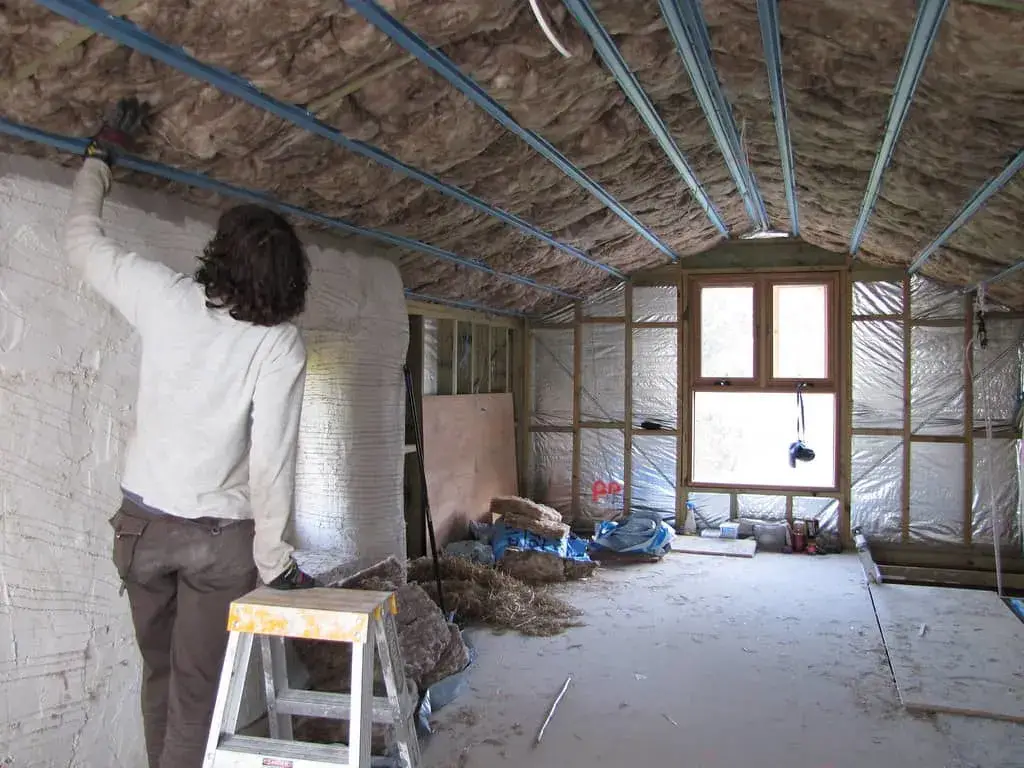
Another way to start insulating a shipping container home is via using strawbale or hempcrete. These insulation batts are fluffy, thick and also comprehensible.
The cool thing about strawbale or hempcrete is that the insulation materials you can use here are very affordable and eco-friendly. They are stacked like blocks, and the nice thing is that you don’t have to worry about massive temperature changes.
At the same time, the strawbale or hempcrete insulation is bringing in a low R value, which means the thermal resistance values are not overly high. Which is great, because you get to access some nice benefits and plenty of results.
Read More: CertainTeed Solar Shingles Expert Review
Conclusion
Proper insulation is crucial for ensuring the comfort, energy efficiency, and longevity of your shipping container home.
In this content plan, we discussed various aspects of shipping container home insulation, including insulation materials, installation techniques, energy efficiency, moisture control, cost-effectiveness, building codes and regulations, thermal bridging, R-values, soundproofing solutions, and retrofitting insulation.
By choosing the right insulation materials and installation techniques, you can create a comfortable living space while also reducing your energy consumption and lowering your utility bills.
Additionally, effective moisture control strategies can prevent mold and deterioration, ensuring the durability of your home.
It is important to adhere to building codes and regulations when insulating your shipping container home to ensure the safety and structural integrity. Minimizing thermal bridging and maximizing insulation efficiency further enhances the overall insulation performance.
We hope that the information provided in this content plan has given you a comprehensive understanding of shipping container home insulation and its importance. Don’t overlook the significant benefits that proper insulation can bring to your living environment.
Remember, a well-insulated shipping container home not only provides a comfortable living space but also contributes to a more sustainable and energy-efficient lifestyle. Invest in proper insulation and enjoy the many advantages it brings.
Read More: Helpful Cost To Build A Container House In Australia


Thursday 30th of March 2023
5